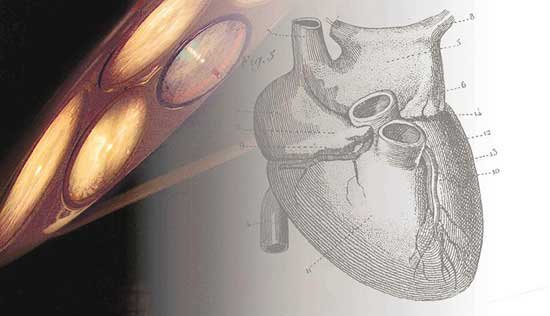A Liver Of Love -- Courant.com
A Liver Of Love
To Save His Dying Uncle, A Man Agrees To A Risky, Living-Donor Transplant At Yale-New Haven Hospital; It Was The First Of Its Kind In Connecticut
By HILARY WALDMAN | Courant Staff Writer
January 13, 2008
: Dr. Sukru Emre slices an 8-inch incision through Corey Gray's six-pack abs, splaying the young man's belly like a butterflied leg of lamb. Tightening heavy metal clamps that anchor flesh and muscle to either side of Gray's ribs, Emre reveals the healthy liver — the main event of the day's surgery.
It is a risky procedure — and one with no medical benefit to Corey Gray. The goal is to use half of Corey Gray's healthy liverto save the life of his dying uncle. Since the procedure was tried on adults a decade ago, at least two living liver donors have died.
But a shortage of livers from deceased donors has forced doctors to take a hard look at the Hippocratic oath and take a little poetic license when it comes to the basic underpinning principle of medical ethics: "Primum non nocere" — Latin for "First, do no harm."
As Emre painstakingly inches through the center of Corey Gray's liver using electric cautery and ultrasound blades to dissect tissue and vessels while keeping blood loss to a minium, he can only do his best.
"If we were to have enough donors, we would be crazy to do this operation," Emre said in English, heavily laced with the accent of his native Turkey.
But in a nation with more than 17,000 people on a waiting list for a liver transplant — almost 2,000 a year die before a donated liver becomes available — living-donor surgery sometimes offers the only hope.
Emre brought the ability to perform living-donor liver transplants to Connecticut when Yale-New Haven Hospital recruited him from Mount Sinai Medical Center in New York last summer. At Mount Sinai, the 55-year-old surgeon became a leader in the field, performing 650 liver transplants, including 250 from living donors.
But at his new home in downtown New Haven last Tuesday morning, Emre wakes up with first-day jitters. He has done this operation hundreds of times. He has rehearsed this one in his head a thousand times or more.
But he is about to perform the first transplant from a living donor in Connecticut and he does not want anything to go wrong — not for his patients and not for Yale-New Haven Hospital, whose reputation as a transplant center was now riding on the tips of his gloved fingers.
Emre is recovering from the flu and still dogged by a stubborn cough when he starts to isolate Corey Gray's liver in Operating Room 11 shortly before 10 a.m.
After almost three hours of tedious work — cut a bit of tissue, staunch the bleeding, gently probe the purplish tissue for the next safe place to cut — Emre removes a large lobe of Corey Gray's liver and lifts it with two hands. A nurse fills a blue plastic bowl with ice cubes and covers the ice with a sheath that looks remarkably like a plastic hotel shower cap. Emre gently places the precious tissue in the bowl.
Bathed in a preservative solution, the liver segment rests in the bowl while a team of assistants starts stitching Corey Gray's abdomen back together. Emre walks calmly through a wooden door to the adjoining operating room, Room 10, where Daniel Gray's abdomen is open wide.
A Death Sentence
Daniel Gray was 59 and awaiting the birth of a new grandchild when he learned of his likely death sentence — a tumor the size of a tangerine growing in his liver. The tumor was so big that it virtually knocked Gray off the waiting list for a conventional transplant.An unassuming guy who looks remarkably like the 1970s TV character Archie Bunker, with none of Bunker's bite, Daniel Gray would be the last person to ask anyone to sacrifice his life to save his own.
Before all of this started last summer, Gray barely knew his 29-year-old nephew Corey, who — as the operation got underway — was asleep on the operating table next door, his once tan and toned body facing a huge recovery, his young wife, Maite, at home in Florida pinned to the phone while she cared for the couple's young daughters, 8 and 1.
But what choice did Daniel Gray have?
Livers from deceased donors are allocated to patients with failing livers or cancerous tumors that are smaller than Daniel Gray's. Gray started with two strikes — his tumor was huge and the rest of his liver still worked. With that combination of factors, odds were good he would die on the waiting list.
The operation has evolved over the past two decades, since doctors at the University of Chicago successfully first split a liver from a deceased donor in half and shared it with two critically ill children. The discovery that the liver could regenerate completely within about eight weeks helped address two problems: the shortage of donated livers and the fact that children often are too small to accept a full adult liver.
With the success of the split-liver operation, doctors decided to try removing a portion of liver from a living donor, usually a parent or grandparent, and transplanting it into a dying child. The sacrifice of a parent's organ to save a child did not present quite the ethical problems that adult-to-adult living donor transplants would.
By the 1990s, though, the donor shortage made trying an adult-to-adult living donor transplant all but inevitable.
Copyright © 2008, The Hartford Courant

No comments:
Post a Comment